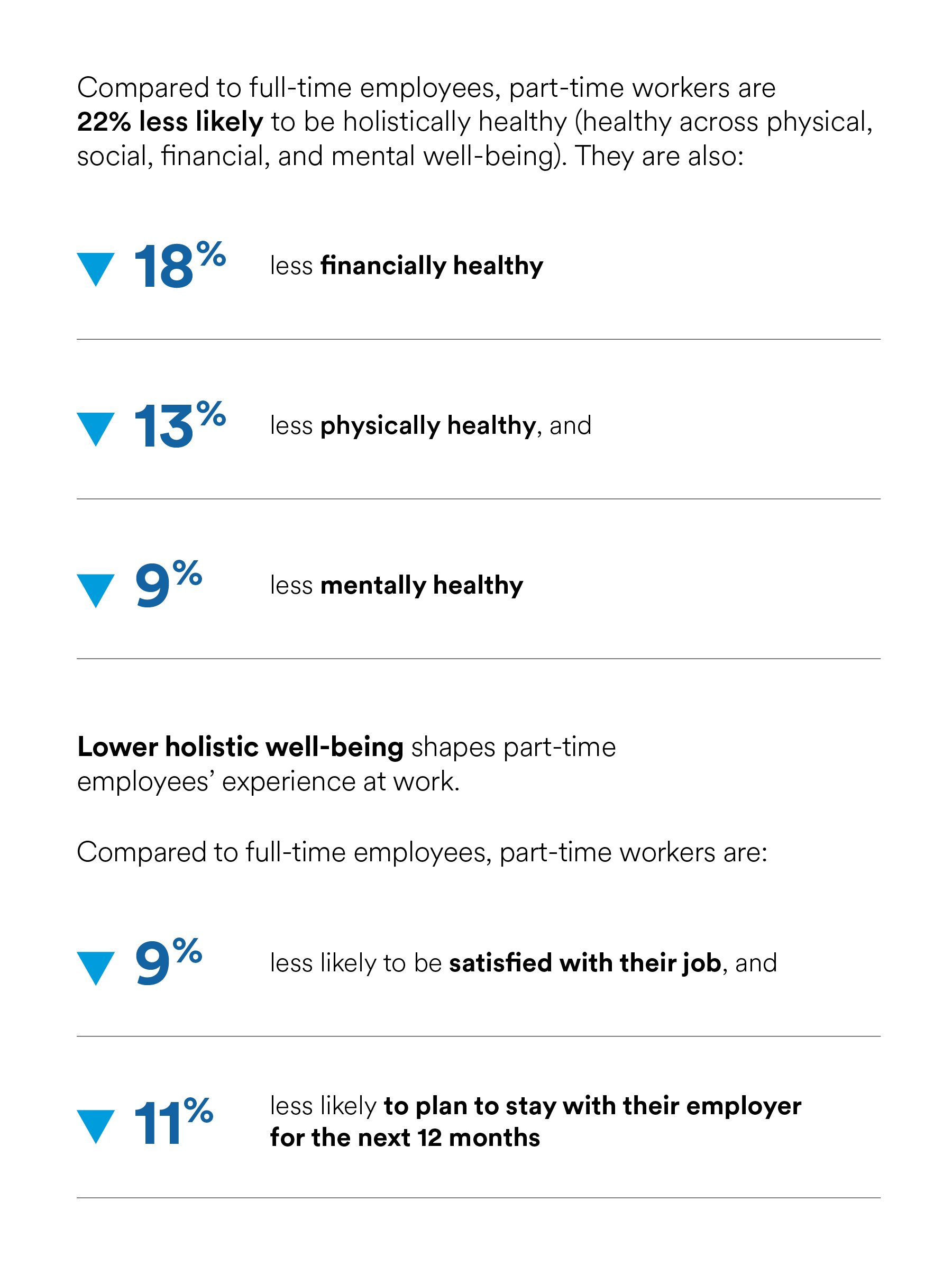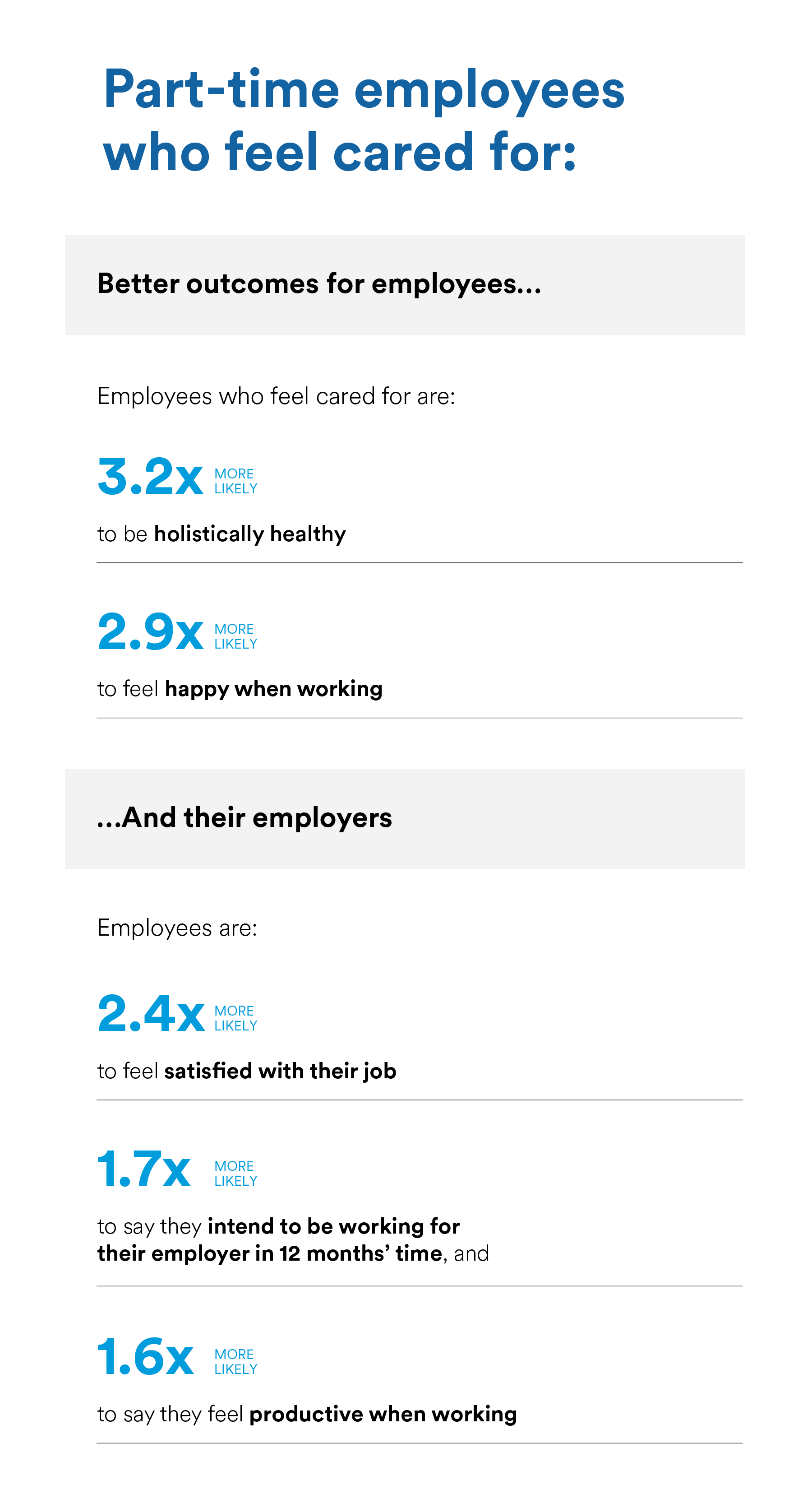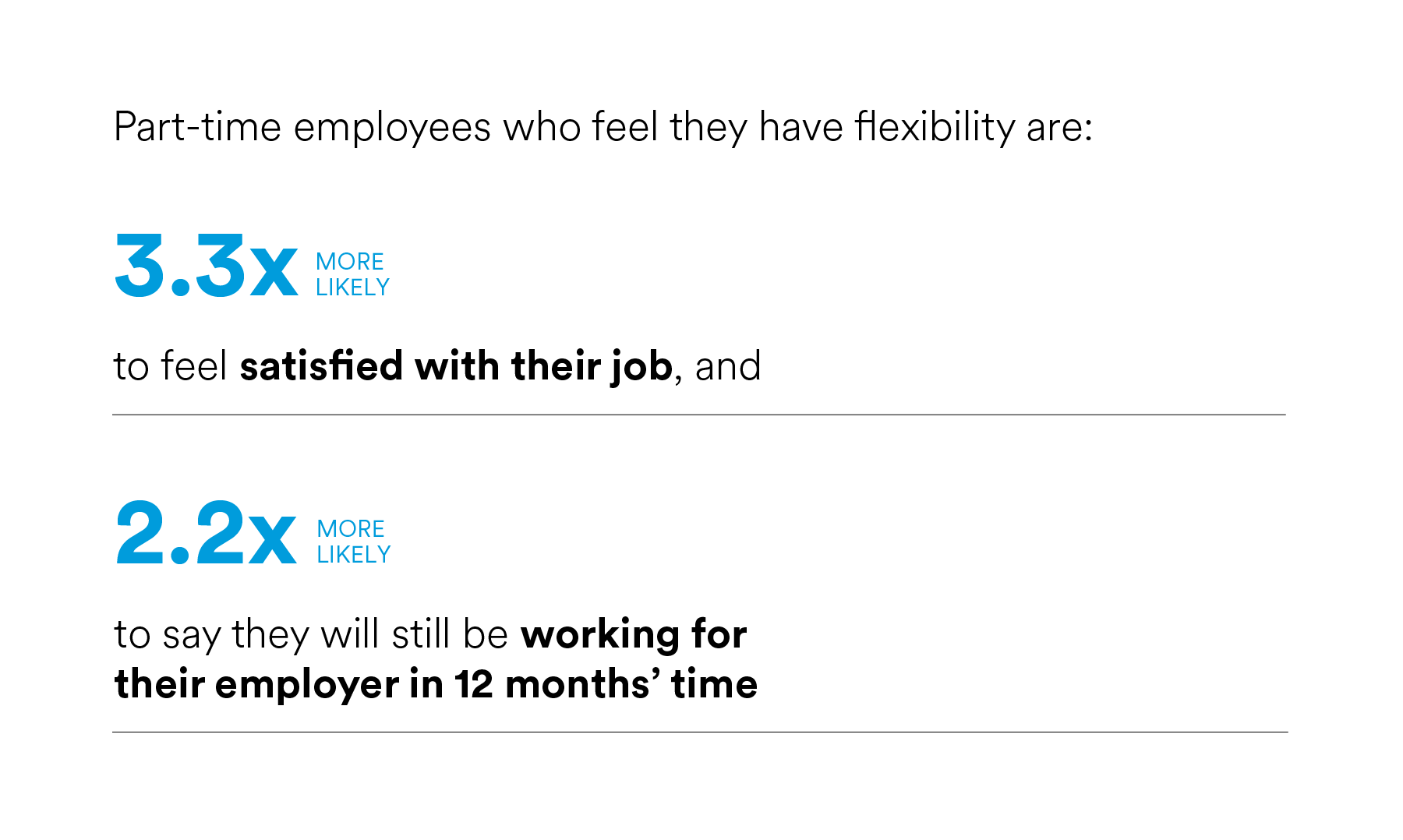The Whole Employee
Caring for today's part-time workforce
Key findings
- Holistic well-being has lagged among part-time employees, leading to lower job satisfaction and loyalty.
- Employers have an opportunity to improve outcomes across these metrics by demonstrating employee care.
- Caring for part-time employees requires putting flexibility first, including offering flexible access to workplace benefits and programs, as well as flexible working arrangements.
Part-time employees make up a small-but-critical part of the U.S. workforce. Roughly one in six employees (16%) now works part-time, with part-timers making up a majority of the seasonal hires that allow organizations to scale operations quickly to meet demand.1
A healthy, productive part-time workforce is key to helping organizations reach their goals — but fostering one requires that employers understand part-time workers’ unique priorities and needs. Not only do part-time workers differ demographically from full-time employees — they are nearly 1.5x more likely to be women and more than twice as likely to be age 58+ — but they’re more likely than average to prioritize flexibility, and need support to manage their work-life balance.
Today’s part-time workers are struggling
As employers grapple with headcount freezes and macroeconomic headwinds, employees are faced with struggles of their own. And part-time workers, in particular, are feeling the pressure:
The importance of employee care
Reversing these trends requires rethinking the employee-employer dynamic with part-time employees in mind — and finding ways to bolster well-being, satisfaction, and loyalty from the ground up. MetLife's 21st Annual Employee Benefit Trends Study has identified an opportunity for employers to accomplish this: by demonstrating employee care.
Employee care refers to taking a genuine interest in employees’ well-being, both at work and outside of work. Demonstrating care requires tailoring support to employees’ unique needs, and combining five elements of the employee experience — purposeful work, flexibility/work-life balance, a social and supportive workplace culture, career development, and wellness programs and benefits — to cultivate the happy, healthy and welcoming workplace that top talent expect.
Done well, care has the power to boost employee wellness, as well as improve outcomes for employers by strengthening the employee-employer relationship:
However, part-time employees have unique needs when it comes to employee care
While demonstrating care can be transformational for the workplace, many employers struggle to deliver care effectively — particularly to part-time employees. And, on average, part-time employees are 10% less likely to feel cared for than their full-time colleagues.
However, employers have several opportunities to care for their part-time workers more effectively. And our research has identified three strategies to help.
1. Extend more benefits to part-time employees, when possible
Wellness programs and benefits play a central role in the employee experience, helping support each aspect of employees’ holistic well-being. While it may not be feasible to offer “full-time” benefits to part-time employees, consider allowing part-timers to purchase additional benefits to boost benefits satisfaction while managing costs. When expanding access to benefits, focus on options most likely to support part-time employees’ needs for flexibility. Paid leave, in particular, is top of mind. While 61% of part-time workers point to paid leave as a must-have benefit, only 30% say they’re offered paid leave through their employer. By allowing employees to purchase their own paid time off, for example, employers can meet their workers’ needs for flexibility while managing costs.
2. Tailor benefits communications to part-time employees’ concerns
Even when part-time employees are offered wellness programs and benefits, they’re significantly less likely as compared to the full-time workers to use them. Part-time employees whose benefits allow them access to financial planning workshops and tools, for example, are still 23% less likely to access this benefit than their full-time colleagues.
Employers have an opportunity to bridge the “awareness gap” through tailored benefits communications. Craft communications that highlight which benefits and programs are available to part-time employees, so employees understand the options available to them and what each such option offers.
In addition, employers should drive home the real-life impact of each benefit with illustrative examples tailored to address part-time employees’ concerns — for example, how benefits can enable employees to manage their work-life balance, or facilitate caretaking.
3. Create a supportive, flexible workplace culture
Flexibility is also a central component of the employee experience. Nearly half of part-timers say they flocked to part-time work for the increased flexibility it provides — yet only 60% say they’re satisfied with the flexibility currently offered by their employer.
However, organizations that excel at flexibility reap significant benefits:
Employers can create a welcoming atmosphere by training managers in empathetic management, as well as specialized training on how to meet the needs of part-time workers. Whenever possible, employers should offer the option to work remotely some or all of the time. When off-site work is not possible, consider allowing part-time employees to select their hours to help them manage their personal and professional lives — and bring their best performance to work.
Boost outcomes for part-time employees through care
Meeting the needs of today’s part-time workers remains a challenge for many employers, as employees crave a blend of “part-time” flexibility and “full-time” benefits support. However, employers have opportunities to meet these needs, even while managing their own costs — and can realize greater loyalty and satisfaction as a result.



